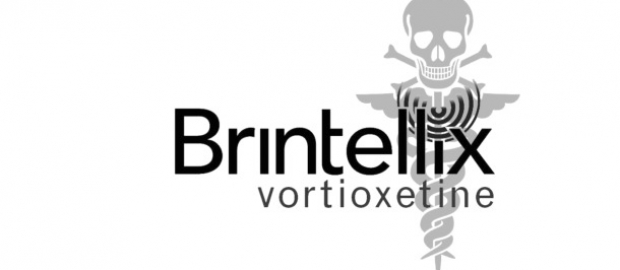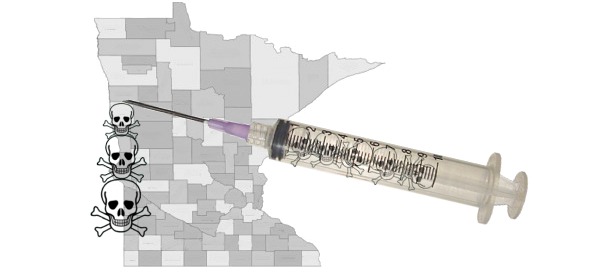Environment
Nutrition Labels Are a Bad Joke, Designed to Mislead, Not to Inform
Nutrition labels are just another piece of the process of dumbing and numbing us down, making it more and more difficult to find out what’s really in our food. Nutrition labels serve one master: Agribusiness.
There’s been a great deal of focus on nutrition labels lately. In the EU, the question was whether to have the “more complicated” type or ones that look like traffic lights with stop and go symbols, supposedly designed to be easier for the public to understand. And now, McDonald’s has gotten into the act by providing nutrition information about their products.
All of this misses the real issue. Foods are made of ingredients, some natural and some chemical, and those ingredients come from different sources. What we need to know is what’s actually in our foods, not some governmental pseudo-health or public relations agency’s take on it.
There are many ways to look at nutrition, but what could be more important than what’s in the foods we buy, where it comes from, and how it’s grown?
What does it matter that we’re told that cholesterol is some percentage of some average person’s presumed desirable amount according to some Agribusiness corporation or a governmental agency that’s controlled by Agribusiness? Are you that average person? Even if you’re that average weight, is it on a small frame or large one? What’s your metabolism like—fast or slow? Your blood type can make a difference in your ideal diet. Your age is a factor. So is your sex.
The newly mandated nutrition labels that now appear on virtually all pre-made foods provide only selected information—information that some government agency or public relations firm has decided should be your focus. Is that likely to be what you need to know?
A couple of vitamins and a couple of minerals are all the genuine nutritional information you get. Protein? The source of protein matters. There are different kinds of protein. If you decide, as the label in the graphic says, that 9 grams of protein will provide 14% of what you require, that must mean you need about 64 grams or protein a day. What kind of protein? Animal? Grain? Legumes? Fruit? Vegetable? They aren’t all the same. And those labels don’t say.
Hardly any micronutrients find their way onto labels. Cholesterol does, though, with the implication that it’s bad for you. As Gaia Health has been saying, that’s far from the truth. Cholesterol is a critical nutrient, and the studies claiming otherwise are largely junk science. The same is true of sodium, which refers to salt intake.
And where’s the information on those nutrition labels about the stuff that’s really bad? Where are the chemical additives? The artificial sweeteners? You need to know that information, and all the focus on nutrition labels keeps your eyes away from that. You may even have noted that ingredients labels are getting harder and harder to find, and they’re growing smaller. That’s no accident. That’s what Agribusiness doesn’t want you to notice. You’re supposed to trust them to tell you what they want you to know.
Vitamin D additives are nearly always Vitamin D2, the artificial form that can be harmful, rather than Vitamin D3, the kind that’s healthy—but the labels don’t tell you which kind is included. If Vitamin E is on the label, you won’t be informed which type. It might be alpha, beta, delta, or gamma tocopherol, or a mix of them, and it may be natural or artificial. Those labels don’t tell you.
Preservatives aren’t on nutrition labels. Neither are chemical additives like 1-methylcyloprene, a gas that’s used in sealed pseudo-fresh food packages that keep the foods looking pretty, even through they’ve lost their nutritional value. None of the following are included on nutritional labels:
- Artificial flavorings
- Aspartame (artificial sweetener that destroys nerves)
- Acesulfame (artificial sweetener)
- Astaxanthin made from coal tar
- BHA (butylated hydroxyanisole) and BHT (butylated hydroxytoluene) – Petroleum derived preservatives, likely carcinogens
- Emulsifiers – Make fats and oils mix
- High-fructose corn syrup – Causes liver disease
- Monosodium glutamate
- Olestra (fake fat)
- Potassium bromate – Increases flour volume, known carcinogen
- Sodium nitrite and sodium nitrate – Sodium nitrate is harmless, but readily converts into sodium nitrite, a carcinogen
That’s a partial list, but you get the idea: Not one of these chemicals is included on a nutrition label—and they can be difficult, and in some cases impossible to find elsewhere on labels.
What about all the drugs given to so many animals? That information isn’t found anywhere on labels, not even in the ingredients!
That’s not the end of the problem with nutrition labels. They don’t tell us the sources of foods. They don’t tell us if the ingredients are meat or vegetable. They don’t tell us anything about the chemicals used to grow the foods, or if, perhaps, they might be organic. And if they’re organic, they don’t tell us what sort of organic standard they adhere to. Nutrition labels don’t tell us whether our foods were grown locally, inside the country, or perhaps came from China. They don’t tell us the travels that our foods have taken.
Nutrition labels serve one purpose, and one purpose alone. They gull people into believing that they’re getting real information about their food. But that’s clearly what they don’t tell us. They give the impression that we’re being looked after, that if we just take the easy way out and read the easy part of the label, the one that supposedly tells us how much of a few seemingly simple items we’re getting, as if we’re all cut from the same cookie cutter, we can stop thinking about what’s really in our foods. We’ll forget about the ingredients, and their quality. We’ll ignore where they came from. We’ll miss whether they’re genuinely organic or came from typical Agribusiness factory farms.
Nutrition labels are just another piece of the process of dumbing and numbing us down, making it more and more difficult to find out what’s really in our food. Nutrition labels serve one master: Agribusiness. They don’t serve us.
What do you think? Do nutrition labels serve a genuine function that benefits people, or are they a smokescreen to hide the truth about how our food is polluted?
Tagged agribusiness, bha, bht, carcinogens in food, chemicals in food, food additives, food ingredients, monosodium glutamate, nutrition label joke, nutrition labels, olestra, vitamins in food





















Pingback: How McDonald’s Evades Info on Ingredients – Waking Times
Pingback: HOW MCDONALD’S EVADES INFO ON INGREDIENTS | Exposing The Realities
Pingback: hikoplertuiom
Pingback: real estate Australia
Pingback: Batticaloa news
Pingback: Affordable Travel Insurance Canada
Pingback: click this link
Pingback: watch it here
Pingback: best blog meehive
Pingback: this site
Pingback: GarciniaCambogia
Pingback: this link
Pingback: nj tree removal in piscataway
Pingback: shades
Pingback: weight loss pills
Pingback: best acne treatment
Pingback: ekskluzywna odziez
Pingback: subconscious mind power
Pingback: career
Pingback: next
Pingback: get rid of herpes
Pingback: SEO Training Vancouver
Pingback: affordable website company
Pingback: seo pricing in Toronto
Pingback: best website company
Pingback: this link
Pingback: click here
Pingback: fastest way to make money online
Pingback: buy saffron extract
Pingback: make extra money online
Pingback: harga logam mulia antam
Pingback: click this
Pingback: malaysia
Pingback: nikon d3200 to buy
Pingback: Sony camera Dealer
Pingback: window
Pingback: sell laptops
Pingback: best site
Pingback: seo in Vancouver
Pingback: SEO Agencies
Pingback: tycoon gold addon work
Pingback: graphologie test
Pingback: cours danglais
Pingback: Search Engine Optimization services Regina
Pingback: bespoke bedding
Pingback: jobs you can do from anywhere
Pingback: jobs you can work from home
Pingback: jobs you can do online
Pingback: sam mansi
Pingback: cars and trucks
Pingback: check that
Pingback: convivial atmosphere and food
Pingback: http://www.youtube.com/watch?v=JynDTKPBJL0
Pingback: watch it here
Pingback: more about the author
Pingback: visit the website
Pingback: Shopify Pricing
Pingback: Shopify Theme
Pingback: submit blog directory
Pingback: Lunarpages Review
Pingback: which web host
Pingback: work from home jobs
Pingback: internet market
Pingback: free website template
Pingback: check your pagerank
Pingback: buy cheap electronics
Pingback: online affiliate programs
Pingback: where to buy garcinia cambogia
Pingback: karen millen outlet
Pingback: seo marketing service
Pingback: belstaff stockists
Pingback: hot crust pizza
Pingback: karen millen outlet uk
Pingback: yummiest Aussie Pizzas
Pingback: vigrx plus reviews
Pingback: that’s the best
Pingback: Website
Pingback: Dreamhost Reviews